Welcome to our blog post on Earth Day Facts For Kids! In this post, we will explore fun and interesting facts about Earth Day and the environment, perfect for younger and older kids alike. From the history of Earth Day to the importance of recycling and the impact of plastic pollution on sea creatures, there is so much to learn and discover. Did you know that the Amazon Rainforest produces 20% of the world’s oxygen, or that the Great Barrier Reef is visible from outer space? Join us as we delve into these fascinating facts and inspire the next generation to take care of our planet. Let’s dive in and explore the wonders of our Earth together!
Earth Day Facts For Kids
1. Earth Day Began in 1970
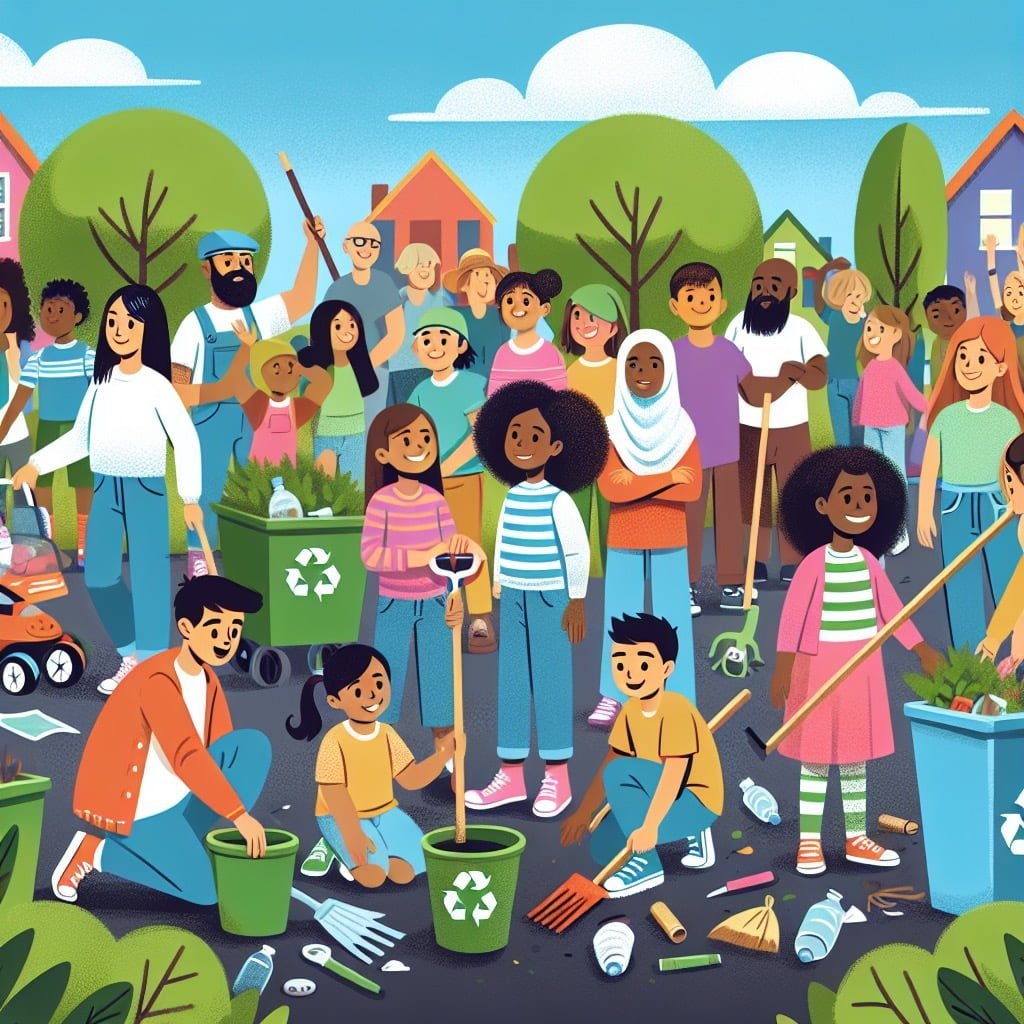
For younger kids: Earth Day started in 1970 to remind people to take care of our planet.
For older kids: Earth Day was first celebrated on April 22, 1970, as a way to raise awareness about environmental issues and promote conservation efforts worldwide.
Detailed explanation:Earth Day Facts For Kids: Earth Day, which began in 1970, is an annual event celebrated on April 22nd to demonstrate support for environmental protection. The idea for Earth Day was proposed by Senator Gaylord Nelson of Wisconsin, who was inspired to create a day dedicated to raising awareness about environmental issues after witnessing the devastating effects of a massive oil spill in Santa Barbara, California in 1969.
On the first Earth Day in 1970, 20 million Americans participated in rallies, marches, and educational events to advocate for a healthier, more sustainable planet. This widespread show of support led to the creation of the United States Environmental Protection Agency and the passing of landmark environmental laws such as the Clean Air Act, the Clean Water Act, and the Endangered Species Act.
Since its inception, Earth Day has grown into a global movement involving over 1 billion people in nearly 200 countries. It serves as a reminder of the importance of protecting our planet and taking action to address pressing environmental issues such as climate change, deforestation, and plastic pollution.
For kids, Earth Day is a great opportunity to learn about the natural world and how they can make a positive impact on the environment. Schools often hold special activities and lessons focused on conservation and sustainability, and families may participate in community clean-up events or plant trees to help improve local ecosystems.
Overall, Earth Day serves as a powerful annual reminder of the need to protect our planet for future generations, making it a crucial event in the ongoing fight for a more sustainable and environmentally-friendly world.
Earth Day Facts For Kids
2. Recycling One Aluminum Can Saves Enough Energy to Watch TV for 3 Hours
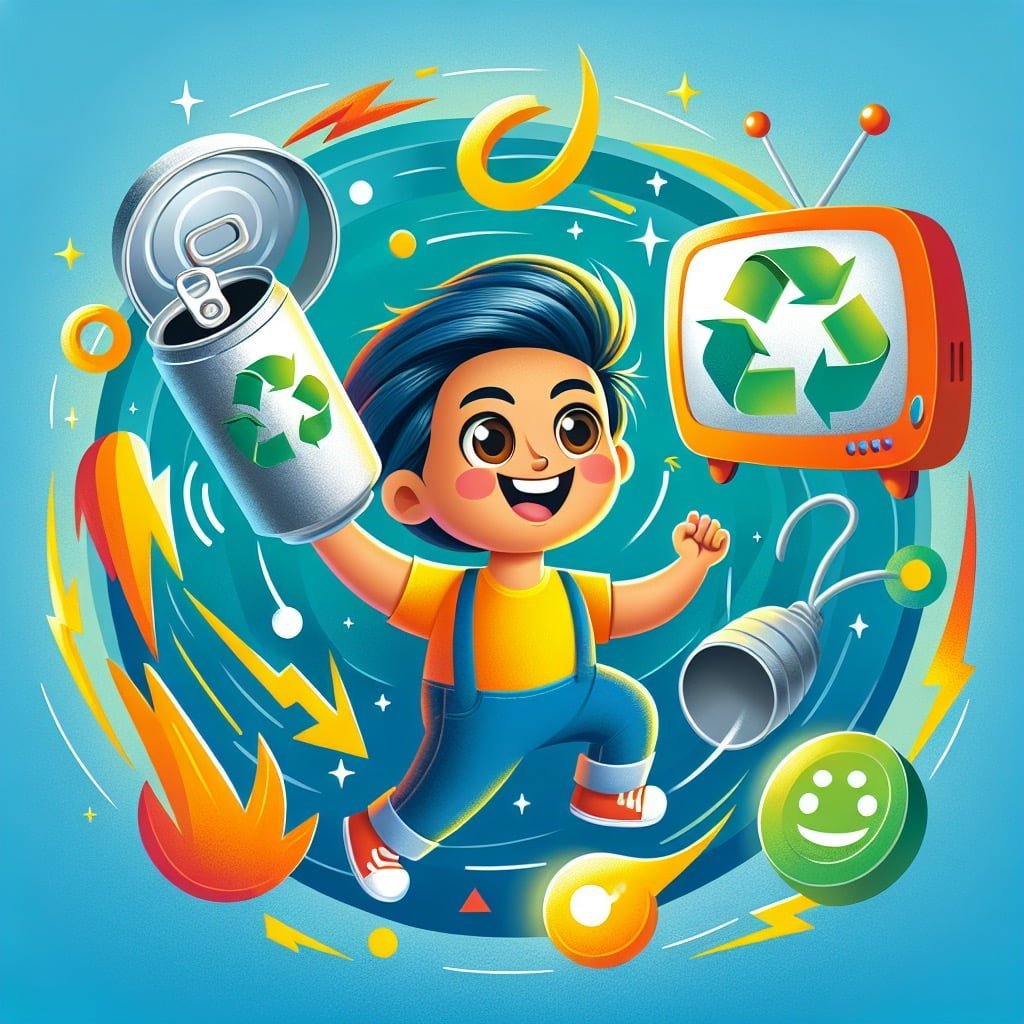
For younger kids: Recycling cans helps save energy and protect the earth.
For older kids: The energy saved by recycling one aluminum can is enough to power a TV for 3 hours, showcasing the importance of recycling and reducing waste.
Detailed explanation:Earth Day is a globally recognized celebration of our planet and a day dedicated to raising awareness about environmental issues. One of the key components of Earth Day is promoting sustainable practices, such as recycling. One impressive fact that often surprises kids is that recycling just one aluminum can can save enough energy to watch TV for 3 hours.
Aluminum is a valuable material that can be recycled indefinitely without losing its quality. The process of recycling aluminum cans involves melting them down and reshaping them into new cans, which uses significantly less energy than producing new aluminum from raw materials. By recycling aluminum cans, we not only conserve energy but also reduce the amount of waste sent to landfills.
Educating kids about the importance of recycling aluminum cans on Earth Day is a great way to encourage them to participate in sustainable practices. By making recycling a fun and engaging activity, children can see the direct impact of their actions on the environment. Teaching kids about Earth Day facts like the energy-saving benefits of recycling aluminum cans helps instill a sense of responsibility and stewardship towards the planet.
In conclusion, the fact that recycling one aluminum can saves enough energy to watch TV for 3 hours is a powerful reminder of the positive impact that small actions can have on our environment. By spreading this message to kids on Earth Day, we can inspire the next generation to become environmentally-conscious citizens who actively participate in efforts to protect our planet.
Earth Day Facts For Kids
3. The Amazon Rainforest Produces 20% of the World’s Oxygen
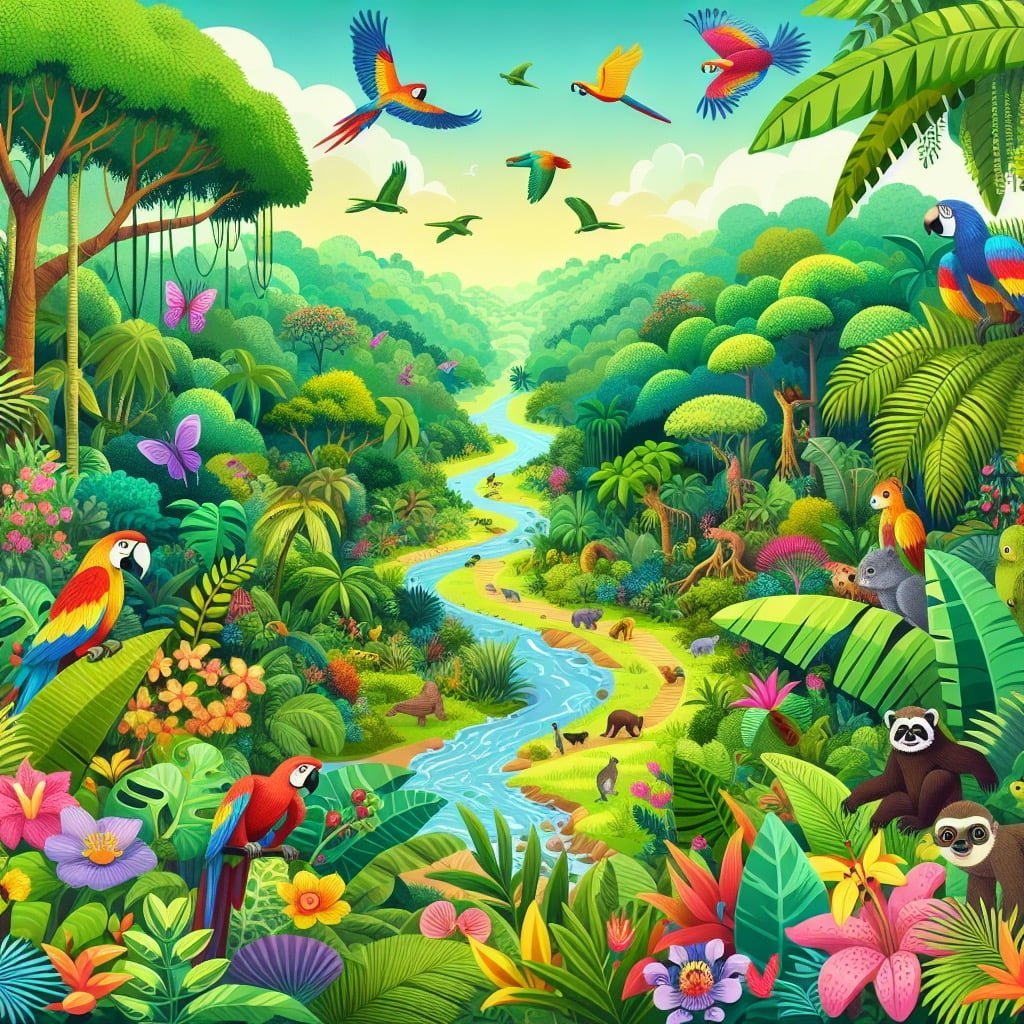
For younger kids: The Amazon Rainforest gives us lots of fresh air to breathe!
For older kids: The Amazon Rainforest, known as the ‘Lungs of the Earth’, produces 20% of the world’s oxygen, making it vital for maintaining oxygen levels and combating climate change.
Detailed explanation:One of the most fascinating Earth Day Facts For Kids is that the Amazon Rainforest produces 20% of the world’s oxygen. This astonishing statistic highlights the critical importance of this vast and biodiverse ecosystem to the health of our planet. The Amazon Rainforest, often referred to as the “lungs of the Earth,” plays a crucial role in balancing the levels of oxygen and carbon dioxide in the atmosphere through the process of photosynthesis.
Photosynthesis is the biological process by which plants, including the trees of the Amazon Rainforest, convert carbon dioxide into oxygen using sunlight. The Amazon Rainforest is home to an incredible array of plant species, many of which are uniquely adapted to thrive in the dense canopy of the forest. These plants not only provide oxygen for us to breathe but also help to regulate the Earth’s climate by absorbing carbon dioxide, a greenhouse gas that contributes to global warming.
Unfortunately, the Amazon Rainforest is facing unprecedented levels of deforestation due to activities such as logging, agriculture, and mining. This destruction not only threatens the incredible biodiversity of the rainforest but also has serious implications for the production of oxygen and the regulation of the Earth’s climate. As we celebrate Earth Day, it is crucial to raise awareness about the importance of protecting the Amazon Rainforest and other vital ecosystems around the world.
In conclusion, the fact that the Amazon Rainforest produces 20% of the world’s oxygen serves as a powerful reminder of the interconnectedness of all life on Earth. By taking action to preserve and protect our planet’s precious resources, we can ensure a healthy and sustainable future for generations to come.
Earth Day Facts For Kids
4. More Than 1 Billion People Participate in Earth Day Activities Each Year
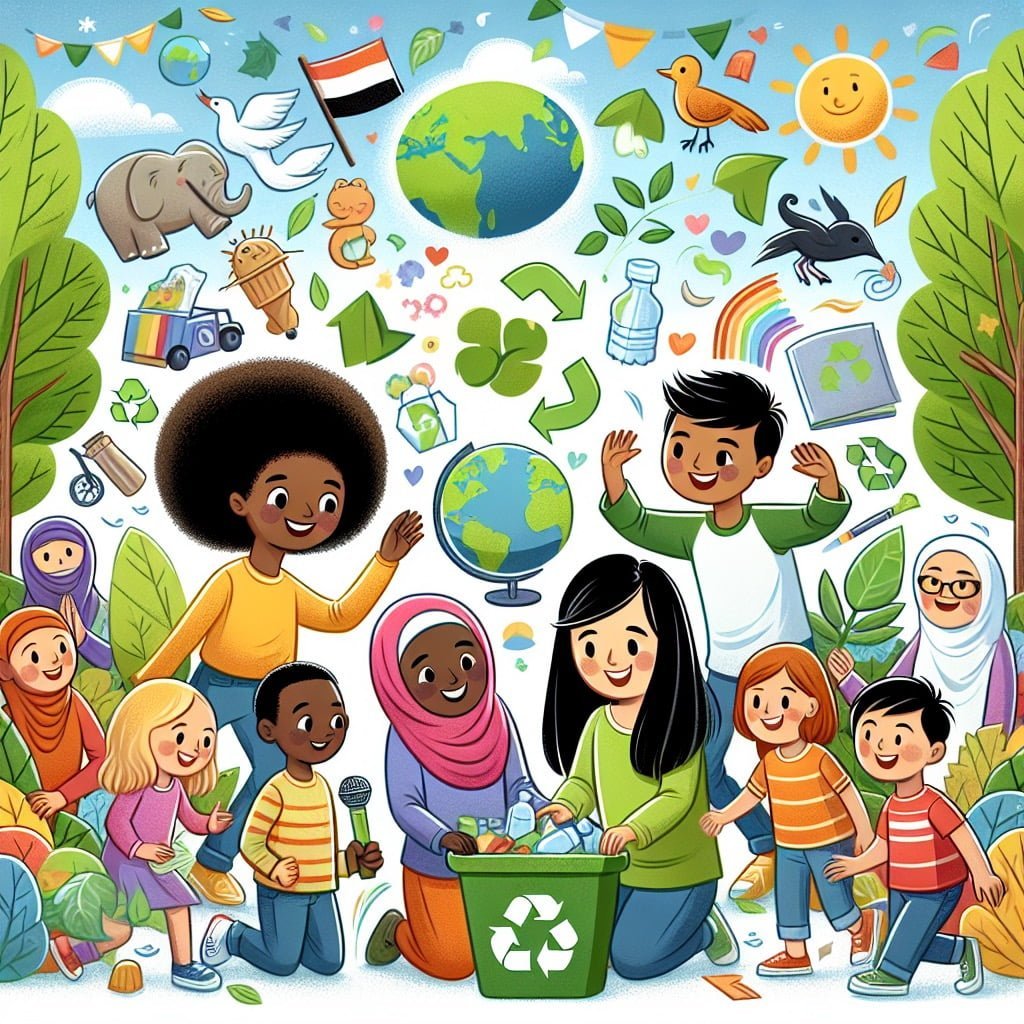
For younger kids: Lots of people around the world celebrate Earth Day together!
For older kids: Over 1 billion individuals take part in Earth Day events annually, joining together to raise awareness, plant trees, clean up beaches, and support environmental causes.
Detailed explanation:Earth Day is an annual event celebrated on April 22nd, with the goal of promoting environmental awareness and protection. It is a day dedicated to educating people about the importance of taking care of our planet and inspiring actions to preserve the Earth’s natural resources. One remarkable Earth Day fact for kids to know is that more than 1 billion people participate in Earth Day activities each year.
The sheer number of individuals taking part in Earth Day activities is a testament to the global reach and significance of this event. From planting trees and cleaning up litter to attending environmental workshops and rallies, people around the world come together on Earth Day to make a positive impact on the planet. This massive participation demonstrates a collective commitment to sustainability and environmental stewardship.
For kids, participating in Earth Day activities can be a fun and educational experience. It provides them with the opportunity to learn about issues such as climate change, pollution, and conservation in a hands-on way. Through engaging in activities like nature walks, recycling projects, and community clean-ups, children can develop a sense of responsibility towards the environment and a deeper appreciation for the natural world.
By involving kids in Earth Day activities, we are not only cultivating a new generation of environmentally-conscious individuals but also fostering a sense of community and global citizenship. The fact that over 1 billion people come together each year to celebrate Earth Day highlights the growing momentum of the environmental movement and the collective power of individuals to effect positive change. Earth Day facts for kids serve as a reminder that no matter how small we may feel in the grand scheme of things, our actions can make a big difference in preserving the planet for future generations.
Earth Day Facts For Kids
5. The Great Barrier Reef is Visible from Outer Space
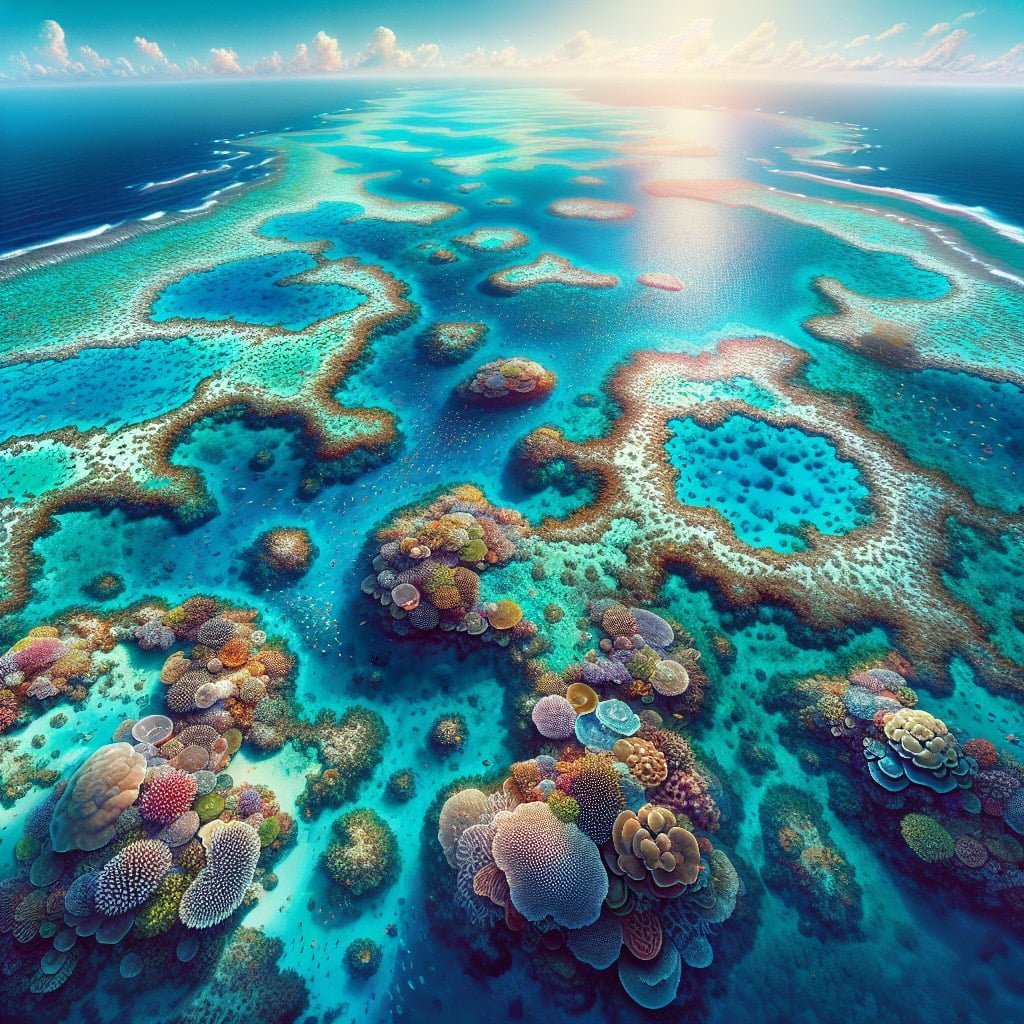
For younger kids: The Great Barrier Reef is so huge, it can be seen from really far away!
For older kids: The Great Barrier Reef, the world’s largest coral reef system, is so massive that it can be seen from outer space, highlighting its incredible size and biodiversity.
Detailed explanation:The Great Barrier Reef, located off the coast of Queensland, Australia, is one of the most incredible natural wonders of the world. Stretching over 1,400 miles, it is the largest coral reef system on Earth. One interesting Earth Day fact for kids is that the Great Barrier Reef is actually visible from outer space. This may seem hard to believe, but the reef is so large that it can be seen by astronauts orbiting the Earth.
The Great Barrier Reef is made up of thousands of individual reefs and islands, which are home to a vast array of marine life. From colorful coral gardens to schools of tropical fish, the reef is teeming with biodiversity. Its sheer size and vibrant colors make it stand out against the deep blue of the surrounding ocean, making it possible to spot from space.
This fact can help kids understand the importance of protecting the environment, especially when it comes to fragile ecosystems like coral reefs. Human activities such as pollution, overfishing, and climate change are putting pressure on the Great Barrier Reef and other reefs around the world. By raising awareness about the beauty and fragility of these ecosystems, we can inspire future generations to take action to protect them.
In conclusion, the fact that the Great Barrier Reef is visible from outer space is not only awe-inspiring, but it also serves as a reminder of the importance of preserving our planet’s natural wonders for future generations. Earth Day Facts For Kids like this one can help educate and inspire young ones to care for the environment and work towards a more sustainable future.
Earth Day Facts For Kids
6. Recycling One Glass Bottle Saves Enough Energy to Power a Light Bulb for 4 Hours
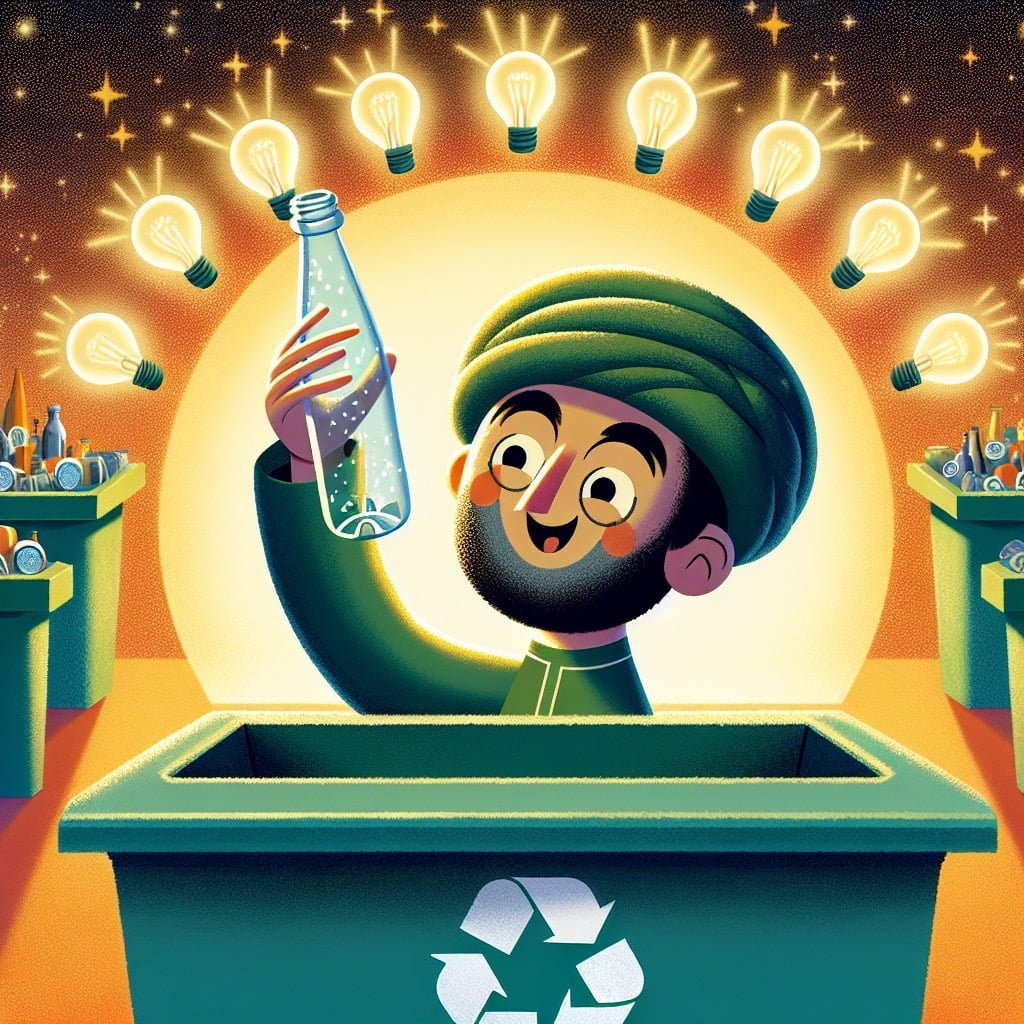
For younger kids: Putting glass in the recycling helps save energy to light our homes!
For older kids: By recycling one glass bottle, enough energy is saved to power a light bulb for 4 hours, emphasizing the benefits of recycling to conserve resources.
Detailed explanation:Earth Day Facts For Kids highlight the importance of sustainability and conservation for younger generations. One striking fact that showcases the impact of recycling is that saving one glass bottle can result in enough energy being saved to power a light bulb for four hours. This statistic underscores the significant energy savings that can be achieved through the simple act of recycling.
Glass is a material that is infinitely recyclable, meaning it can be recycled repeatedly without any loss in quality or purity. When glass is recycled, it is melted down and used to make new glass products, reducing the need for raw materials and the energy required to produce new glass. By recycling just one glass bottle, the energy that would have been needed to create a new bottle from scratch is saved, leading to a substantial reduction in energy consumption.
Encouraging kids to recycle glass bottles, as well as other materials, can help them understand the impact of their actions on the environment. By teaching children about the benefits of recycling, we can instill in them a sense of responsibility and stewardship for the planet. Earth Day Facts For Kids serve as a reminder that small individual actions, such as recycling a glass bottle, can have a big collective impact on energy conservation and environmental sustainability.
Earth Day Facts For Kids
7. More Than 500 Billion Plastic Bags are Used Worldwide Every Year
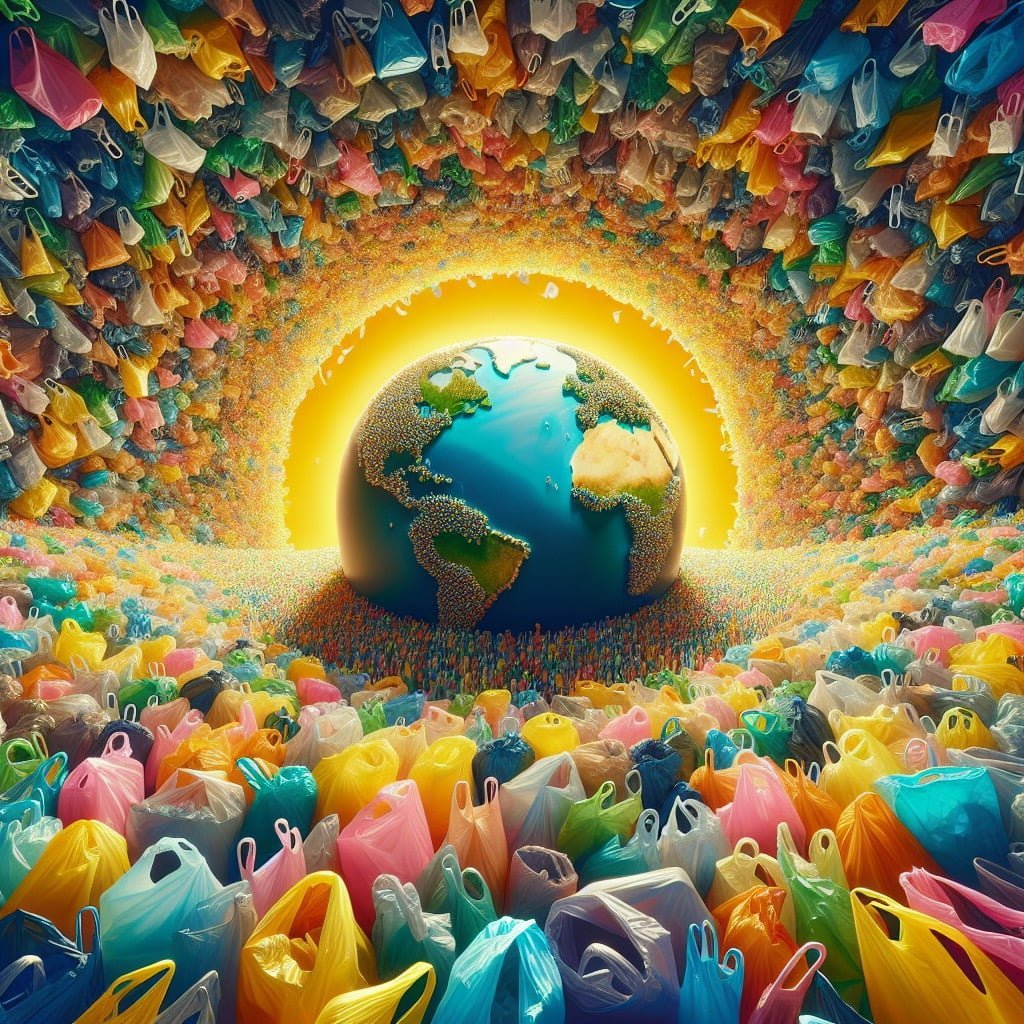
For younger kids: Using reusable bags instead of plastic helps protect animals and our planet!
For older kids: Globally, over 500 billion plastic bags are used annually, contributing to pollution, harming wildlife, and damaging ecosystems, urging the need for sustainable alternatives.
Detailed explanation:Earth Day is a crucial annual event that aims to raise awareness about environmental issues and encourage actions to protect our planet. One alarming fact that highlights the need for sustainable practices is that more than 500 billion plastic bags are used worldwide every year.
Plastic bags are a convenient and versatile packaging option, but their widespread use has led to detrimental effects on the environment. These bags are not easily biodegradable and often end up in landfills or oceans, where they can take hundreds or even thousands of years to break down. This results in pollution of the land and water, posing a threat to wildlife and marine ecosystems.
For Earth Day, it is important to educate children about the impact of plastic bags on the environment. By learning about this issue, kids can understand the importance of reducing, reusing, and recycling plastic bags to minimize their ecological footprint. They can also explore alternative options such as using reusable bags, which can help decrease the demand for single-use plastic bags.
Through educational initiatives and community involvement, we can work towards reducing the staggering number of plastic bags used globally each year. Earth Day serves as a reminder of the urgent need to protect our planet and instill a sense of responsibility towards the environment in future generations. By taking small steps towards sustainability, we can make a big difference in preserving the Earth for generations to come.
Earth Day Facts For Kids
8. The Ozone Layer Protects Earth from Harmful UV Radiation

For younger kids: The ozone layer acts like a shield, protecting us from the sun’s rays!
For older kids: The ozone layer, located in the Earth’s stratosphere, absorbs and filters out harmful ultraviolet (UV) radiation from the sun, safeguarding life on our planet from potential harm.
Detailed explanation:Earth Day Facts For Kids are important to teach children about the environment and ways to protect the planet. One crucial fact is that the Ozone Layer plays a vital role in shielding Earth from harmful UV radiation. The Ozone Layer is a region of the Earth’s stratosphere that contains high concentrations of ozone molecules. These molecules absorb and scatter the majority of the Sun’s ultraviolet radiation, specifically harmful UVB and UVC rays.
UV radiation can have detrimental effects on both humans and the environment if not filtered out by the Ozone Layer. Overexposure to UV radiation can lead to skin cancer, cataracts, and weakened immune systems in humans. It can also cause harm to marine life, crops, and ecosystems. Without the protection of the Ozone Layer, life on Earth would be significantly impacted by the Sun’s harmful rays.
Unfortunately, human activities such as the use of chlorofluorocarbons (CFCs) in aerosols and refrigerants have led to the depletion of the Ozone Layer. This thinning of the Ozone Layer, particularly over the polar regions, has resulted in the formation of the infamous ozone hole. Efforts such as the Montreal Protocol have been put in place to phase out the use of ozone-depleting substances and help repair the Ozone Layer.
Educating children about Earth Day Facts For Kids, including the importance of the Ozone Layer, can inspire them to become advocates for environmental conservation. By understanding the role of the Ozone Layer in protecting Earth from harmful UV radiation, children can actively participate in efforts to preserve and restore our planet for future generations.
Earth Day Facts For Kids
9. Over 1 Million Sea Creatures are Killed Every Year Due to Plastic Pollution
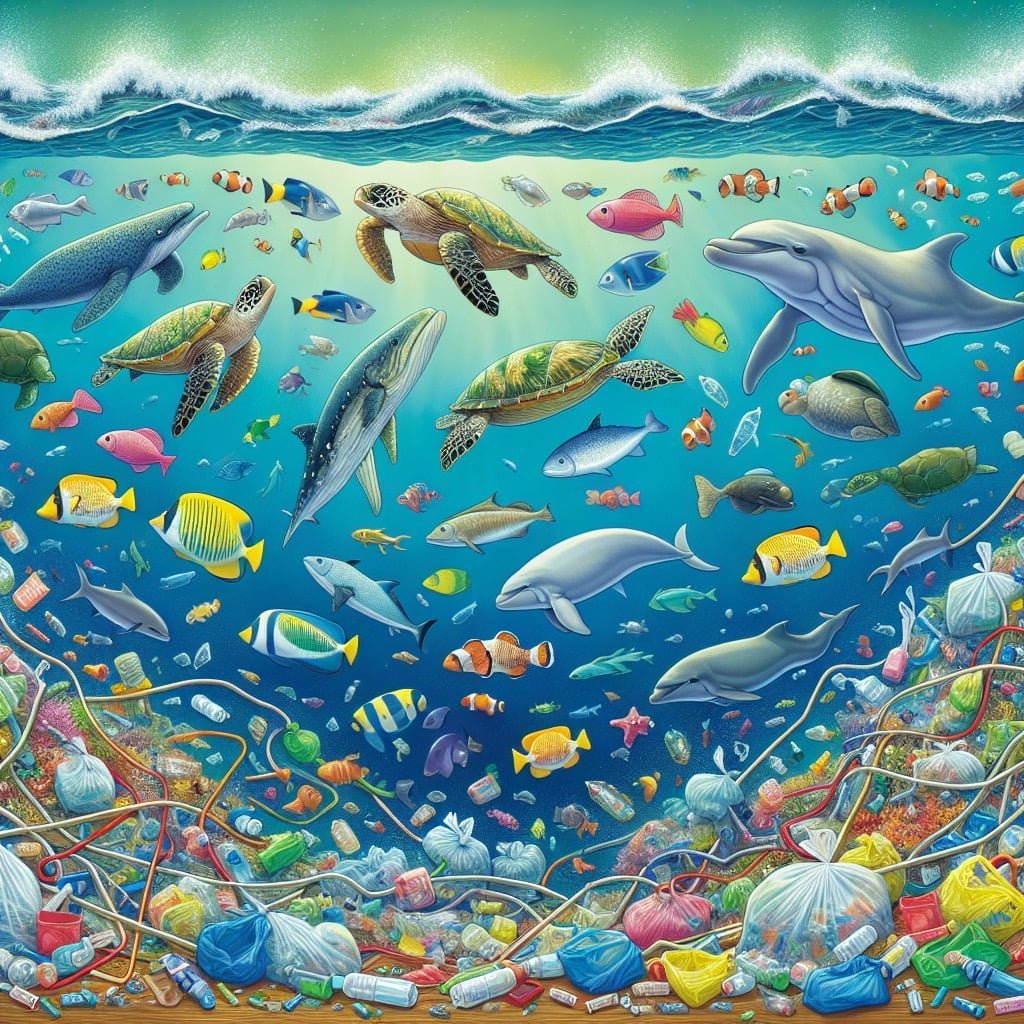
For younger kids: Trash in the ocean hurts animals like turtles and fish.
For older kids: Each year, more than 1 million marine animals die due to plastic pollution in the oceans, illustrating the devastating impact of plastic waste on marine ecosystems and wildlife.
Detailed explanation:Earth Day Facts For Kids: It is a harsh reality that over 1 million sea creatures are killed every year due to plastic pollution. This staggering number highlights the devastating impact that human activities, specifically the excessive use of plastic products and improper disposal of plastic waste, have on marine life.
Plastic pollution poses a serious threat to various marine species, including fish, seabirds, turtles, and marine mammals. These animals often mistake plastic debris for food, leading to ingestion and entanglement. The ingestion of plastic can cause internal injuries, blockages, and even death. Additionally, animals can become entangled in plastic waste, leading to suffocation, starvation, and drowning.
The harmful effects of plastic pollution extend beyond individual animals to entire marine ecosystems. As plastic debris accumulates in the ocean, it can release toxic chemicals and disrupt natural processes, impacting the health and wellbeing of marine habitats. Furthermore, plastics can act as vehicles for transporting invasive species, further threatening biodiversity.
To address the issue of plastic pollution and protect marine life, it is essential for individuals, communities, governments, and industries to take action. This can involve reducing the use of single-use plastics, properly disposing of plastic waste, participating in beach clean-ups, and supporting policies and initiatives that promote conservation and sustainability.
In conclusion, the fact that over 1 million sea creatures are killed every year due to plastic pollution serves as a somber reminder of the urgent need to address this pressing environmental issue. By raising awareness, taking action, and adopting more sustainable practices, we can help protect marine life and preserve the health of our oceans for future generations. Earth Day Facts For Kids.
Earth Day Facts For Kids
10. Earth is the Only Planet Known to Support Life
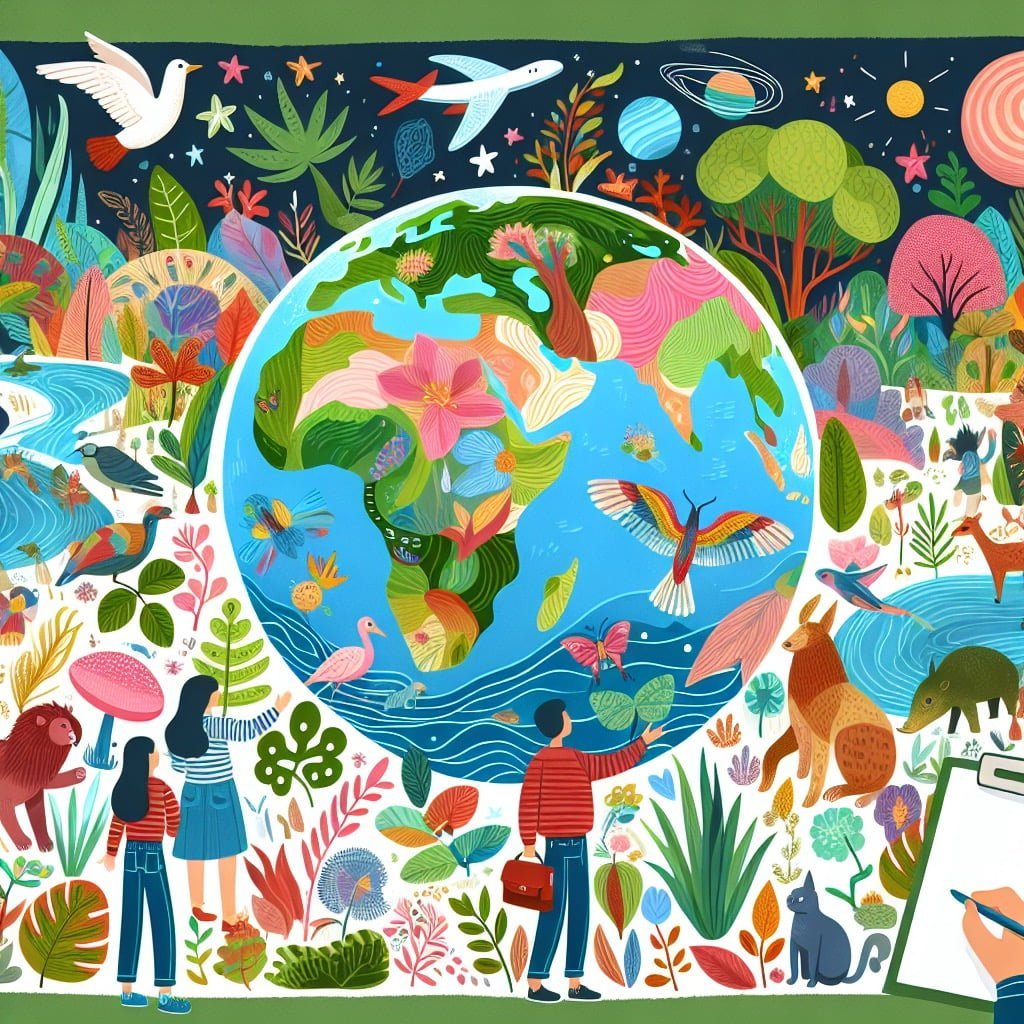
For younger kids: We live on a special planet that gives us air, water, and everything we need!
For older kids: Earth is the only known planet in our solar system that supports life, with a unique combination of atmosphere, water, and diverse ecosystems that sustain a wide variety of plants, animals, and humans.
Detailed explanation:Earth Day Facts For Kids
One of the most fascinating Earth Day facts for kids is that our planet, Earth, is the only one in our solar system known to support life. This unique characteristic of Earth is due to a combination of factors such as its distance from the sun, its atmosphere, and its abundance of water.
The distance of Earth from the sun is crucial in maintaining the right temperatures for life to thrive. If Earth were too close to the sun, its surface would be too hot for liquid water to exist, making it impossible for life as we know it to survive. On the other hand, if Earth were too far from the sun, its surface would be too cold, freezing any water present and making it difficult for life to survive. The Goldilocks zone, where Earth is located, is just right for the conditions necessary for life to flourish.
Additionally, Earth’s atmosphere plays a key role in supporting life. The atmosphere acts as a protective shield, blocking harmful radiation from the sun and providing the right mix of gases for organisms to breathe. The presence of oxygen in Earth’s atmosphere, produced by plants through photosynthesis, is essential for many forms of life to thrive.
Furthermore, Earth’s abundance of water is another key factor in supporting life. Water is essential for many biological processes, providing a medium for chemical reactions to occur and serving as a habitat for countless species. The vast oceans and rivers on Earth are teeming with life, from microscopic organisms to massive whales.
In conclusion, Earth is truly a unique and wondrous planet, providing the perfect conditions for life to exist. As we celebrate Earth Day, let us appreciate and protect this incredible home we all share.
Did you know?
Did you know that recycling one ton of paper saves 17 trees and reduces greenhouse gas emissions?
Summary of Earth Day Facts For Kids
Looking to educate your kids about the importance of taking care of our planet? This blog post is full of fun and interesting facts about Earth Day that are sure to capture their attention! From learning about the origins of Earth Day in 1970 to discovering how recycling can save energy, there’s something for kids of all ages to enjoy. Did you know that the Amazon Rainforest produces 20% of the world’s oxygen or that the Great Barrier Reef can be seen from outer space? These engaging facts will not only pique your child’s curiosity but also inspire them to make a difference in protecting our environment. With over 1 billion people participating in Earth Day activities each year, it’s clear that small actions can have a big impact. Encourage your kids to read on and discover more fascinating Earth Day facts that will inspire them to become stewards of our planet.
Sources and additional information for Earth Day Facts For Kids
WikipediaBritannicaEnvironmental Protection Agency (EPA)National Oceanic and Atmospheric Administration (NOAA)The Nature ConservancyWorld Wildlife FundEarth Day NetworkGreenpeace InternationalJane Goodall InstituteEnvironmental Protection Agency (EPA)World Wildlife Fund – ConservationNature ConservancyGreenpeaceUnited Nations Environment Programme (UNEP)Conservation InternationalEarthwatch InstituteEnvironmental Defense FundSierra Club




